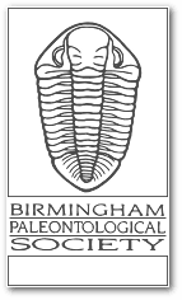Visitor
Paleo in the News
Even for elite athletes, the body’s metabolism has its limits
While ultramarathoners are capable of huge energy spurts, overall the athletes top out at 2.5 times the metabolic rate needed for basic body functions.
Categories: Fossils
Big questions on how food affects our health
Editor in Chief Nancy Shute explores the science behind major questions on food and health — from the addictive potential of ultraprocessed foods to the high-protein diet craze to the drawbacks of keto.
Categories: Fossils
A rice weevil frozen in flight won the 2025 Nikon Small World photo contest
From fluorescent ferns to sprawling neurons, this year’s winning photos reveal the structures and artistry of life seen through a microscope.
Categories: Fossils
Our relationship with alcohol is fraught. Ancient customs might inspire a reset
As evidence of alcohol's harms mounts, some people are testing out sobriety. Look to ancient civilizations' ways for a reset, scholars suggest.
Categories: Fossils
Why are orcas still attacking boats and what can be done about it?
As orcas continue to attack boats in the Strait of Gibraltar, those studying them think they know why
Categories: Fossils
An estimated 54,600 young children are malnourished in Gaza
A study that screened young children in Gaza for malnutrition found that nearly 16 percent suffered from wasting in August 2025.
Categories: Fossils
From poison to power: How lead exposure helped shape human intelligence
Long before humans built cities or wrote words, our ancestors may have faced a hidden threat that shaped who we became. Scientists studying ancient teeth found that early humans, great apes, and even Neanderthals were exposed to lead millions of years ago. This toxic metal can damage the brain, yet modern humans developed a tiny genetic change that protected our minds and allowed language and intelligence to flourish.
Categories: Fossils
From poison to power: How lead exposure helped shape human intelligence
Long before humans built cities or wrote words, our ancestors may have faced a hidden threat that shaped who we became. Scientists studying ancient teeth found that early humans, great apes, and even Neanderthals were exposed to lead millions of years ago. This toxic metal can damage the brain, yet modern humans developed a tiny genetic change that protected our minds and allowed language and intelligence to flourish.
Categories: Fossils
As wildfires worsen, science can help communities avoid destruction
Blazes sparked in wild lands are devastating communities worldwide. The only way to protect them, researchers say, is to re-engineer them.
Categories: Fossils
Can chilli powder really stop animals from digging up your garden?
Chilli powder is touted as a cheap, easy, safe option to protect your garden from foxes and squirrels. James Wong casts a scientific eye on this popular remedy
Categories: Fossils
A purrfect guide to cats and our complex relationship with them
Our bond with cats – which has seen them go from hunter to house pet – may be more diverse than with any other animal. And Jerry D. Moore's Cat Tales: A history rounds up the lot, says Bethan Ackerley
Categories: Fossils
These ancient bumblebees were found with their pollen source
Insects have long pollinated plants, but evidence of ancient pairing is rare. Fossils now show bees and linden trees goes back 24 million years.
Categories: Fossils
Dinosaur fossil rewrites the story of how sauropods got long necks
A 230-million-year-old fossil found in Argentina shows that the evolution of sauropod dinosaurs’ long necks began earlier than previously thought
Categories: Fossils
Fossil hand bones point to tool use outside the Homo lineage
The fossil wrist and thumb bones suggest Paranthropus boisei could grasp tools around 1.5 million years ago.
Categories: Fossils
We all have a (very tiny) glow of light, no movie magic needed
Normal cellular processes in living things — from germinating plants to our own cells — create biophotons, though escaping light isn’t visible to us.
Categories: Fossils
The viral Chicago ‘Rat Hole’ almost certainly wasn’t made by a rat
Researchers used methods from paleontology to analyze the quirky local landmark, created when a rodent of a certain size fell into wet concrete.
Categories: Fossils
How a Yurok family played a key role in the world’s largest dam removal project
In The Water Remembers, Amy Bowers Cordalis shares her family’s account of the Indigenous-led fight to restore the Klamath River in the Pacific Northwest.
Categories: Fossils
New wetsuit designs offer a layer of protection against shark bites
By weaving Kevlar or polyethylene nanofibers into standard neoprene in wetsuits, researchers found ways to limit injury during rare encounters with sharks.
Categories: Fossils
Ancient humans in Italy butchered elephants and made tools from their bones
Researchers in Italy discovered 400,000-year-old evidence that ancient humans butchered elephants for food and tools. At the Casal Lumbroso site near Rome, they found hundreds of bones and stone implements, many showing impact marks from butchery. The findings reveal a consistent prehistoric strategy for resource use during warmer Middle Pleistocene periods.
Categories: Fossils
Coral collapse signals Earth’s first climate tipping point
The global die-off of coral reefs signals a critical shift in Earth’s climate system with global environmental consequences along with economic ones.
Categories: Fossils
